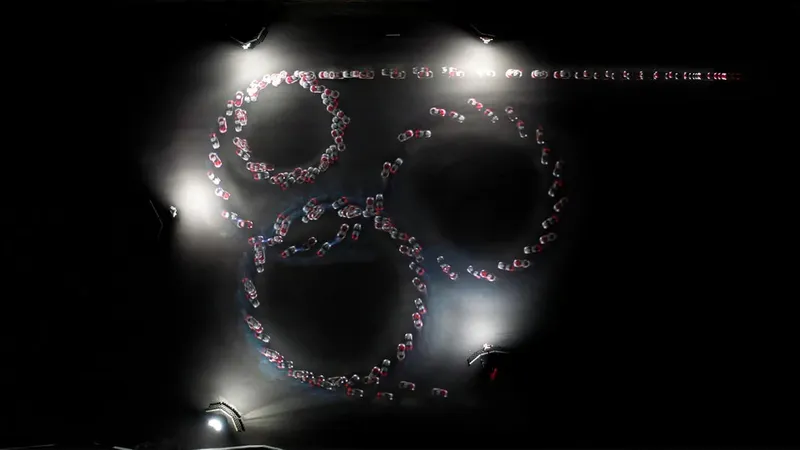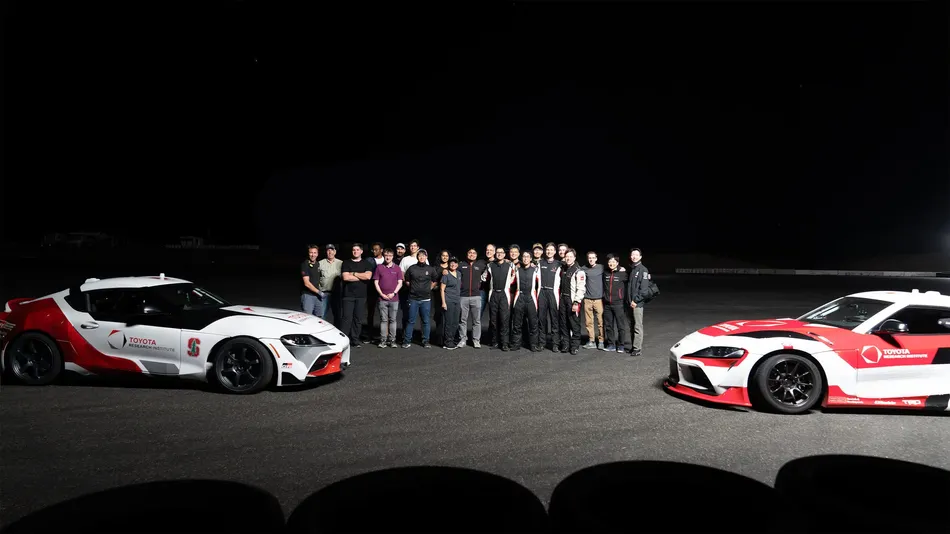AI-directed, driverless drift: Stanford Engineering and Toyota Research Institute achieve autonomous milestone
If self-driving vehicles can navigate this complex road challenge safely, the learnings could help advance the safety of automated driving in urban scenarios.

Two vehicles tandem drifting, autonomously. | Toyota Research Institute
This article was first published on
engineering.stanford.eduThis article was discussed in our Next Byte podcast.
The full article will continue below.
Tandem Drift is something of a cross between grand prix auto racing and pairs figure skating. Two cars skid and weave, appearing to “drift” while under each driver’s control. The lead car swerves through an elaborate series of maneuvers, and the chase car follows, trying to mirror every move while staying as close as possible – without touching. It’s a high-risk scenario, with points for elegance, speed, and synchrony – a supreme test of driver skill and control.
Now, imagine the same scenario without drivers, directed entirely by artificial intelligence. That’s exactly what Chris Gerdes, professor emeritus of mechanical engineering, and one of the world’s leading authorities on autonomous vehicles, chose as his next great challenge.
Gerdes and team, in collaboration with researchers at the Toyota Research Institute, have created the world’s first autonomous Tandem Drift team, with the goal of advancing the potential of AI to improve safety. Both cars, lead and chase, are driverless. Using only AI, the lead must plan and execute its line without human input. The chase car must follow suit, planning a trajectory that allows it to drop back when the lead vehicle changes direction and catch up quickly afterward.
The two vehicles are guided only by GPS and communicate by Wi-Fi. At times the tandem is separated by less than 10 inches, moving at speeds up to 35 mph. Gerdes’ ultimate goal is to bring these experimental lessons to autonomous vehicles everywhere to increase safety and confidence on public roadways.
“It’s a phenomenal sport. Professional drifters are the best at what they do. They’re operating at the absolute maximum of what the tire-road interface will allow,” Gerdes says. “We wanted to see if we could match that skill – using steering, throttle, and brakes to master friction and gravity to achieve these graceful moves. You can’t pre-program that. It’s a real test of what AI can do.”
The video of the team’s achievement captures the grace, power, and control of autonomous Tandem Drift – and the remarkable capabilities of modern computation.
